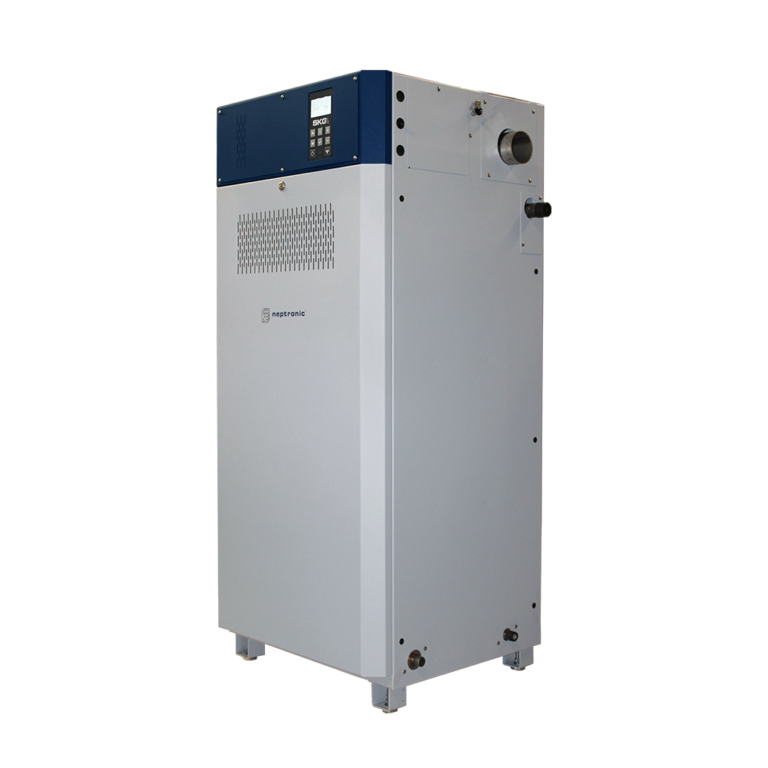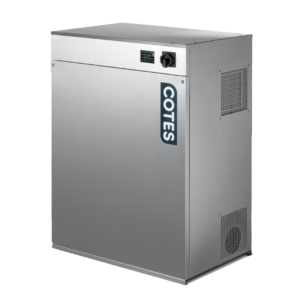
In many industrial facilities, the processes involved produce a lot of excess heat as a by-product. But not only does this drive the temperature up, but it also causes the relative air humidity to drop - which has its own set of negative side effects, like increased risk of electrostatic discharge, desiccation of products, reduced comfort for the employees and less control of the production process.
The solution? Adiabatic cooling. By evaporating water using an air humidifying system, these side-effects can be reduced or eliminated, and the evaporative effect of introducing water spray into a hot room will produce an energy-efficient cooling effect. But this can be quite complicated to understand, so today we want to explain what adiabatic cooling is, how it works, and why it’s a good solution for production facilities.
The Adiabatic Effect Explained
Put very simply, adiabatic cooling is “process of reducing heat through a change in air pressure caused by volume expansion.” It’s a result of the first law of thermodynamics, which states that energy in a closed system doesn’t go away, it only goes somewhere. So in the adiabatic process, compressed gasses become hot, and expanding gasses become cooler, since the energy is transferred through work, rather than heat.
The adiabatic effect is actually something that’s going on above our heads all the time, in the form of clouds. As an air mass gets warmer, it expands and becomes less dense. When it is less dense, it’s lighter and rises above the higher-pressure, denser mass of air. When it reaches an area with less dense air, it expands even further, losing energy that was gained and cooling as it does so. When that cooling air crosses the dew point, the moisture in the air accumulates as clouds. With enough moisture and cooling, we then get rain.
How It Works
When used in a commercial premises, in a heating and cooling solution, adiabatic cooling works like this:
- A large fan draws warm air through water-moistened pads
- As the water in the pads evaporates, the air is chilled and pushed out to the room
- The temperature can be controlled closely just by adjusting the airflow of the cooler
The whole process harnesses the evaporation process to cool or heat your workspace and remove moisture from the air. This is one of the reasons many industrial and production facilities prefer adiabatic cooling solutions, since the presence of local heat sources add heat to the room, and adiabatic cooling is a low-energy and very effective way to remove that heat and keep the environment at a controlled temperature and humidity.
Adiabatic cooling also presents another benefit to businesses. As well as being a more cost-effective way of cooling and warming a space (around 80% lower than conventional cooling systems, using 2W of electricity to product 630W of cooling), it is one of the most environmentally friendly options. Since adiabatic cooling utilises the natural process of evaporation, it produces minimal CO2 emissions helping you meet your sustainability goals as well.
The Benefits of Adiabatic Cooling
There are a lot of different benefits to using an adiabatic cooling system in any business, but they particularly shine in production and manufacturing environments, where equipment and processes produce high levels of excess heat. Just a few of those benefits include:
- Effective at regulating temperature and humidity, protecting equipment and products
- Sustainable and environmentally friendly
- Large energy savings over other types of cooling system
- Reduced risk of damage to equipment and staff
- Comfortable and healthy working conditions for staff
At Humidity Solutions, we provide specialist advice, installation and maintenance for adiabatic cooling systems for all applications. We have years of experience working with manufacturing plants to ensure their environment is safe and well controlled. We have a variety of case studies on this solution, which you can read here, or just get in touch with the team today to ask any questions and find out more.

